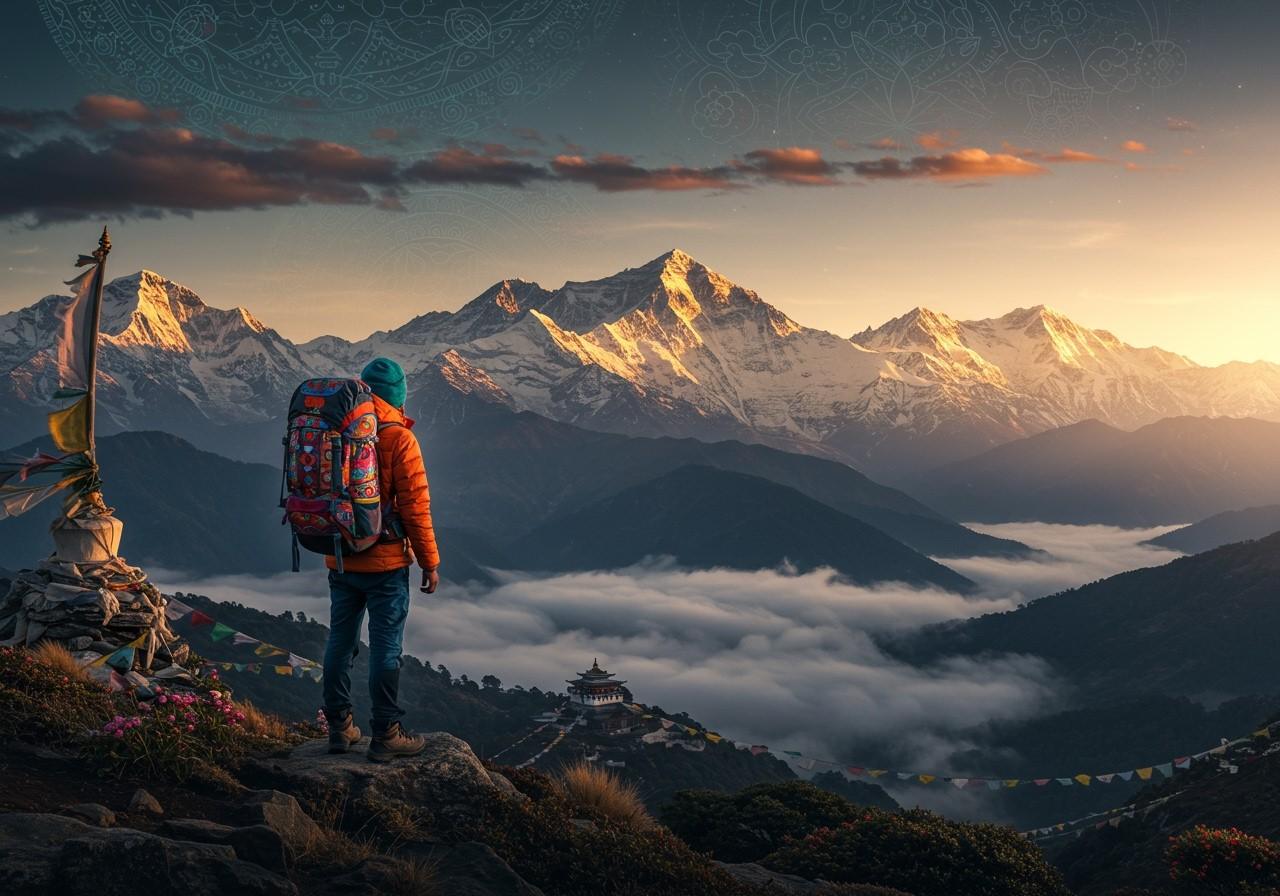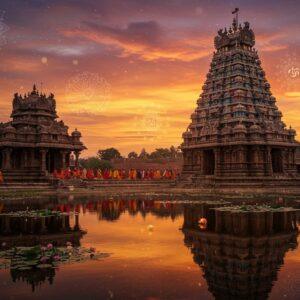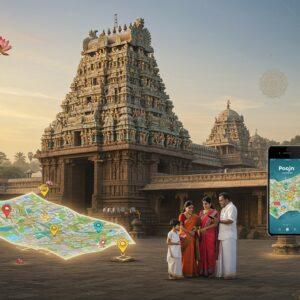
Embark on an unforgettable journey to explore the majestic Himalayas, a paradise for trekking enthusiasts of all levels, from beginners to seasoned adventurers. These towering peaks hold immense cultural and spiritual significance in Indian tradition, offering trekkers not just a physical challenge, but a chance to connect with nature on a deeper level. Let’s delve into the world of Himalayan trekking, understanding its challenges, rewards, and how to prepare for your first adventure.
Choosing the Right Trek
Selecting the perfect trek for beginners is paramount. It’s essential to choose a route that aligns with your fitness level and experience. Here are some beginner-friendly options highlighted by recent search results:
- Har Ki Dun Trek: This moderately challenging trek in Uttarakhand takes about 7 days, reaching an altitude of 11,675 ft. Known for its stunning alpine meadows and ancient villages, it’s perfect for those seeking a moderate challenge with breathtaking scenery.
- Beas Kund Trek: A relatively easy to moderate trek in Himachal Pradesh, the Beas Kund trek takes around 4 days and reaches 12,100 ft. It’s a great introduction to Himalayan trekking, offering views of the Beas River source and surrounding glaciers.
- Valley of Flowers Trek: Located in Uttarakhand, this trek is famed for its vibrant meadows blooming with diverse flora. It’s generally considered easy to moderate, taking 4-6 days and reaching 14,100 ft. The best time to visit is during the monsoon season (July-August) when the flowers are in full bloom.
- Nag Tibba Trek: A perfect weekend trek in Uttarakhand, Nag Tibba is easily accessible and reaches 9,915 ft in just 2 days. It’s a great option for beginners and offers stunning views of the snow-capped peaks. This trek is accessible year-round except during the monsoon.
Assess your physical fitness and prepare accordingly. Acclimatization is vital to prevent altitude sickness, so gradual ascents and rest days are crucial. The ideal trekking seasons in the Himalayas are pre-monsoon (March-June) and post-monsoon (September-November), offering pleasant weather and clear trails.
Essential Gear and Equipment
Equipping yourself with the right gear is essential for a safe and enjoyable trek.
- Trekking boots: Invest in sturdy, waterproof boots that provide ankle support and good traction.
- Backpack: Choose a comfortable and durable backpack with enough capacity for all your essentials, ideally around 50-60 liters.
- Clothing layers: Pack layers of clothing to adapt to changing weather conditions, including warm base layers, fleece jackets, waterproof outerwear, and comfortable trekking pants.
- Trekking poles: Trekking poles provide stability and reduce strain on your knees, especially during descents.
Pack light but ensure you have all the necessary specialized equipment, including a headlamp, water purification tablets, a first-aid kit, and a map/compass. Proper nutrition and hydration are key, so pack energy bars, dry fruits, and a reusable water bottle.
Himalayan Base Camps
Base camps play a crucial role in Himalayan trekking, serving as acclimatization points and launching pads for various treks.
- Gangotri: A significant Hindu pilgrimage site, Gangotri is the source of the Ganges River and a base for treks like Gaumukh Tapovan.
- Manali: Nestled in the Kullu Valley, Manali is a popular base for treks to Beas Kund, Hampta Pass, and Bhrigu Lake.
- Leh: Located in Ladakh, Leh serves as a gateway to numerous high-altitude treks, including Stok Kangri and Markha Valley.
Base camps offer accommodation, food, and medical facilities. They also provide opportunities for cultural exchange with fellow trekkers and locals. Respecting local traditions and the environment is paramount.
Trekking Packages and Tours
Various trekking packages cater to different preferences and experience levels.
- Guided tours: Offer comprehensive services, including permits, experienced guides, porters, accommodation, and meals, making them ideal for beginners.
- Self-organized treks: Provide greater flexibility and cost savings but require meticulous planning and navigation skills.
Understand the cost breakdown and inclusions of a trekking package. Customizable options can tailor the experience to your fitness level and preferences. Book in advance, especially during peak season, and verify the credentials of your tour operator.
Safety Tips and Guidelines
Prioritizing safety is crucial for a successful Himalayan trek.
- Altitude sickness: Acclimatize properly, ascend gradually, and stay hydrated to minimize the risk of altitude sickness.
- Weather changes: Be prepared for unpredictable weather conditions by packing layers of clothing and checking the forecast before you go.
- Wildlife encounters: Be aware of local wildlife and maintain a safe distance. Avoid feeding animals and dispose of waste responsibly.
Follow trail markers, stay with your group, and inform someone of your trekking plans. Carry a detailed map, compass, and communication device for emergencies. Maintain good physical hygiene throughout the trek.
Cultural and Environmental Respect
Respecting the local culture and environment is essential for responsible tourism.
- Cultural sensitivity: Learn about the customs and traditions of Himalayan communities and dress modestly.
- Leave No Trace: Minimize your environmental impact by packing out all trash, staying on designated trails, and avoiding disturbing the natural flora and fauna.
- Support local economies: Purchase goods and services from local vendors to contribute to the community’s well-being.
Essential Pooja Items for a Safe Himalayan Trek
Many trekkers seek blessings for a safe journey before embarking on a Himalayan adventure. Poojn.in offers a variety of traditional items for spiritual protection:
- Rudraksha Mala: A sacred bead necklace believed to offer protection and positive energy.
- Pure Copper Water Bottle: Traditionally used for its purifying properties.
- Ganesh Yantra: A symbol of Lord Ganesha, revered for removing obstacles.
- Natural Camphor (Kapur): Used in small rituals and purification ceremonies.
- Brass Ghanti (Bell): Used in prayers and ceremonies.
Find these and other authentic puja items at www.poojn.in. We offer pan-India home delivery and secure packaging. For bulk orders or inquiries, call us at +91 7908548235.
Conclusion
Embarking on your first Himalayan trek is a transformative experience. By choosing the right trek, preparing thoroughly, and embracing responsible tourism, you can create lasting memories while respecting the natural and cultural heritage of the Himalayas. Happy trekking!
FAQs on Himalayan Trekking for Beginners
What is the best time to go for Himalayan trekking? The ideal trekking seasons are pre-monsoon (March-June) and post-monsoon (September-November) for pleasant weather and clear trails.
What should I pack for a Himalayan trek? Essentials include warm clothing layers, sturdy trekking boots, a first-aid kit, water bottle, snacks, backpack, and trekking poles.
Do I need any permits for Himalayan trekking? Yes, permits are required for certain treks, including national park permits and special area permits. Check specific requirements for your chosen trek.
How fit do I need to be for a trek in the Himalayas? A good level of physical fitness is recommended. Regular cardio and strength training will help prepare you for the challenges of trekking.
What is the difference between a base camp trek and a regular trek? Base camp treks lead to the base camps of major peaks, while regular treks explore various routes and destinations without necessarily reaching a base camp.
Can beginners join a Himalayan trekking package? Absolutely! Many packages are designed specifically for beginners, offering guided support, acclimatization days, and manageable routes.
How high do we trek in the Himalayas? Trekking altitudes vary from 2,000 meters (6,561 feet) to over 5,000 meters (16,404 feet). Beginners should start with lower altitude treks to acclimatize properly.


